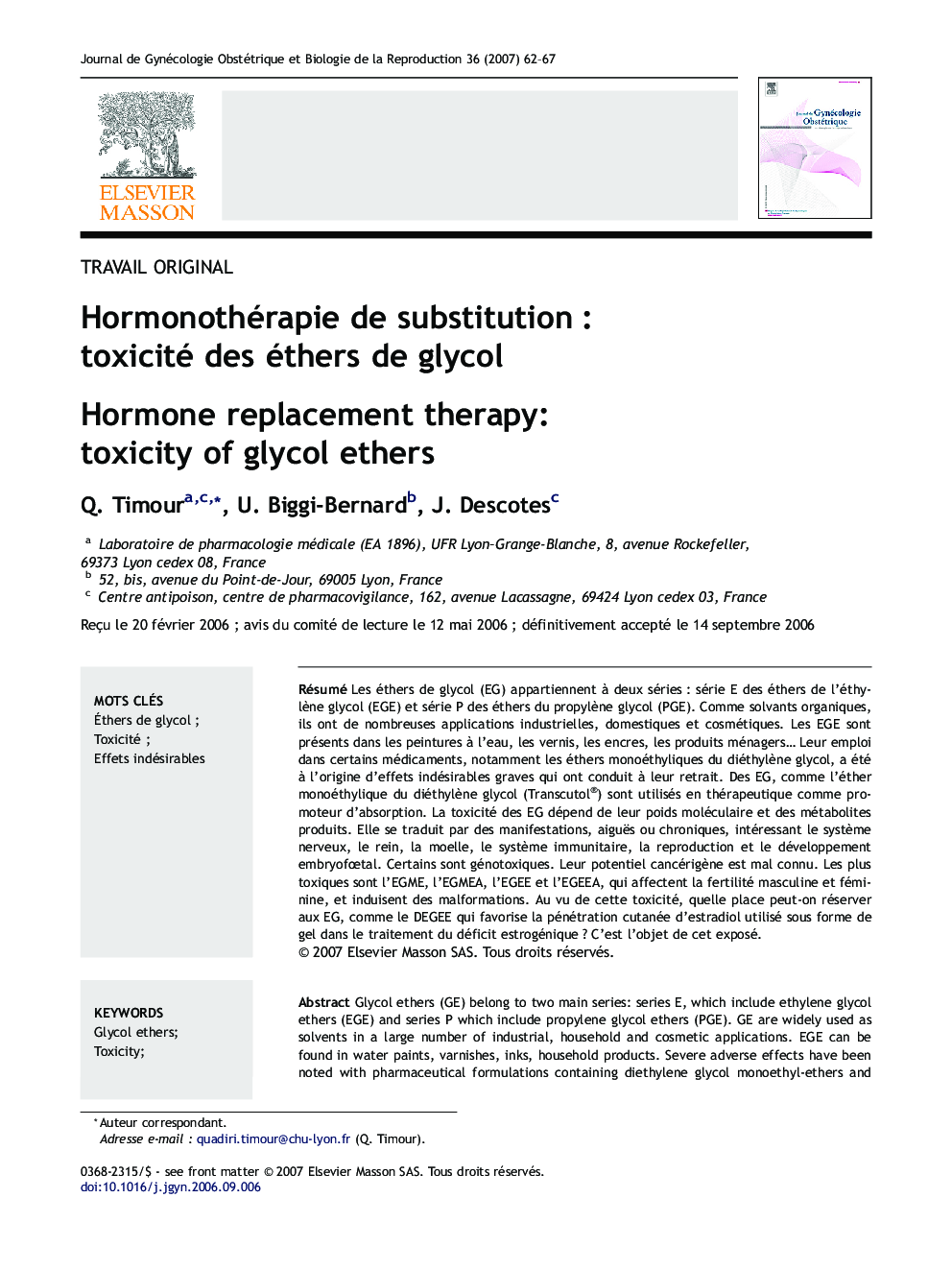| Article ID | Journal | Published Year | Pages | File Type |
|---|---|---|---|---|
| 3273888 | Journal de Gynécologie Obstétrique et Biologie de la Reproduction | 2007 | 6 Pages |
Abstract
Glycol ethers (GE) belong to two main series: series E, which include ethylene glycol ethers (EGE) and series P which include propylene glycol ethers (PGE). GE are widely used as solvents in a large number of industrial, household and cosmetic applications. EGE can be found in water paints, varnishes, inks, household products. Severe adverse effects have been noted with pharmaceutical formulations containing diethylene glycol monoethyl-ethers and this led to withdrawal from the French market. The toxicity of GE depends on the molecular weight and the metabolites generated. It can manifest following acute or chronic exposure by disorders of the nervous system, bone marrow, immune system, kidneys as well as fertility, reproduction and embryofetal development. Several EGE are mutagenic. The carcinogenic risk is not known. The most toxic derivatives EGME, EGMEA, EGEE and EGEEA alter male and female fertility, and induce malformations. Taking these toxic effects into consideration, what is the place of GE as absorption promoting agents? An example is DEGEE, which facilitates estradiol penetration when used as a gel in the treatment of estrogen deficiency. This review is intended to address this issue.
Related Topics
Health Sciences
Medicine and Dentistry
Endocrinology, Diabetes and Metabolism
Authors
Q. Timour, U. Biggi-Bernard, J. Descotes,
